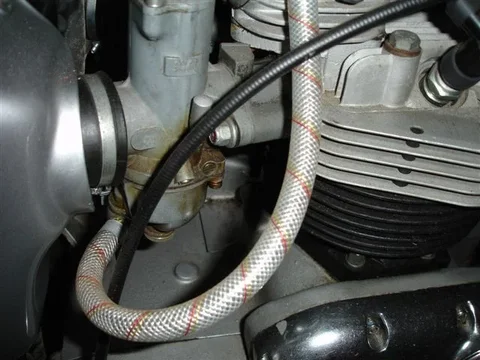lostmarbles your a wealth of knowledge on these old tojos cheers for the info you`ve added here top stuff hopefully its why me truck just started idling @ 900rpm`s , i was kind of hoping the big heap of goop i dumped out of the water trap may fix it but nup on to the diaphram cheers champs
Thanks Mudguts ..

.. but I don't think I should personally be taking the credit for all the good info in this thread.
Good luck with your diaphragm change.
There seems to be alot of discussion on the diaphram replacement. As a preventative parts replacement measure, when should these diaphragms be replaced?
I have over 400kms on my truck and do not have this issue so far. But do not want to wait until it happens. Also, is there any maintenance related issues to keep my IP running optimally? I have a 3b engine.
"Every 120,000kms" is a figure that sticks in my head for the "diaphragm replacement interval" Haryv.
And adding a couple of drops (no more) of neatsfoot oil to the diaphragm at every oil change is a good idea along with draining engine oil (that gets through the seals) from the other side maybe every second oil change.
I made a separate post on this but it slipped buy so since it is related I thought I'd just add it on here.
So it looks like I'll be replacing the diaphragm in the near future. I plan on draining the oil from the pump while I'm at it. I figure I might as well give the entire injection system a good service.
In addition to pulling the injectors for testing/replacement what other areas should I plan on going over in order to get the system in good shape over the long run.
New air filter
New clear hoses- is there a reason that the hoses from the pump to the throttle need to be clear? Are they standard vinyl tubing?
New fuel filter and fuel hoses
Any particular tools I should have to get the thing in standard tune?
I'm new to working on Diesels- though I have been driving one for 5 years- the nissan patrol just keeps on going...... crossing fingers there- ha!
Edit- neglected to mention the mileage- about 165,000 km (100.000miles) on the clock. The truck has enjoyed minimal maintenance until this point- so give me the full list....
Pete
Gee that's a low mileage Pete! I'm envious.
People fit clear fuel hoses so they can see the state of the fuel passing through. (For example they may be keen to see if there are air bubbles present.) But as far as I'm aware the factory never did so. And I'm not a fan of clear fuel hoses myself because my experience is that the clear plastic doesn't stand up well to the fuel. (I find it becomes opaque and stiff over a relatively short period of time.)
I use "black marine fuel hose" which lasts as good as the OEM black "rubber" hoses.
Your list sounds good (with regards to maintenance) and the FSM and Owner's Manaual are excellent guides on this subject.
And I think the best thing to do with tools is simply buy whatever you need to do each particular job well. For instance you'll probably need to buy two different "filter removal tools" ... one for the smaller dia fuel filter and another for the larger oil filter. And you want ones that work well in very confined spaces.
If I tried to make a tool list I'm sure I'd leave important stuff out.
I've got virtually every tool I ever need now (cos I'm old

) but it has taken a lifetime to accumulate that. And over that period I've regularly replaced tools when better ones have caught my eye.
It takes experience to know which are the best tools to buy and I think the best thing to do is just get stuck into the work and learn for yourself.
(The only way you can really seek advice to avoid mistakes is to ask opinions on specific tools.)


 .. but I don't think I should personally be taking the credit for all the good info in this thread.
.. but I don't think I should personally be taking the credit for all the good info in this thread.




